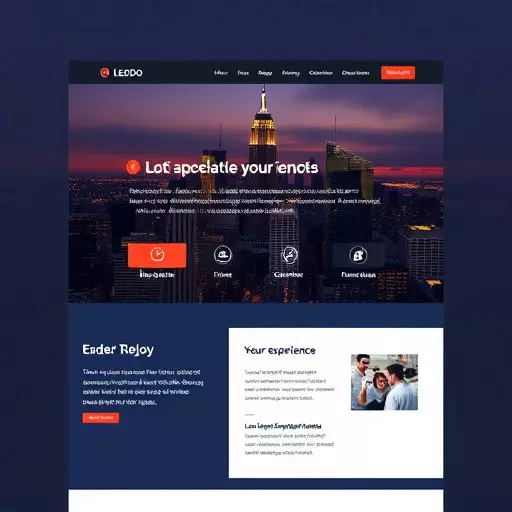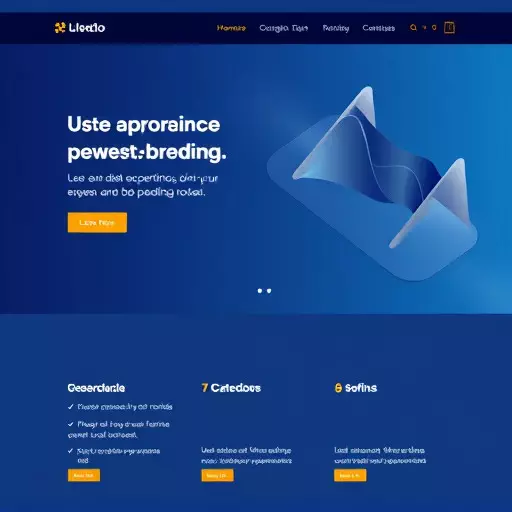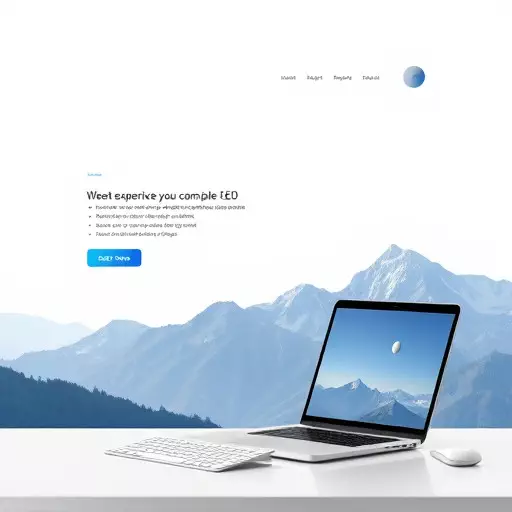In today's competitive digital landscape, Website rebranding services in Toledo leverage Adaptive Web Redesign strategies to enhance user experience (UX) and drive business success. This involves a holistic approach that includes UX overhauls, UI redesigns, strategic planning, user research, data analysis, and A/B testing. By focusing on both visual appeal and intuitive navigation, these services create compelling online identities that attract and retain users. Key metrics like bounce rates, time spent on site, and conversion rates are monitored to ensure the redesigned websites remain effective in fostering positive user experiences and achieving business goals.
In today’s digital landscape, a successful business needs more than just a functional website; it requires an adaptive web redesign strategy for optimal performance across devices and enhanced user engagement. This article explores the evolving needs of modern businesses through key services like website rebranding services Toledo and in-depth sections on User Experience (UX) overhaul and User Interface (UI) redesign. We’ll uncover strategies for implementing responsive design, leveraging A/B testing, and measuring success through crucial performance indicators.
- Understanding Adaptive Web Redesign: A Need for Modern Businesses
- Website Rebranding Services Toledo: Redefining Your Online Identity
- User Experience (UX) Overhaul: Strategies for Enhanced Engagement
- User Interface (UI) Redesign: Creating Visually Appealing Interfaces
- Incorporating Responsive Design for Cross-Device Compatibility
- A/B Testing and Its Role in Validating Design Decisions
- Measuring Success: Key Performance Indicators for Adaptive Redesign
Understanding Adaptive Web Redesign: A Need for Modern Businesses

In today’s digital landscape, where technology and user preferences are constantly evolving, Adaptive Web Redesign has become a crucial strategy for modern businesses. It involves not just a surface-level makeover but a comprehensive approach to enhancing website performance and user experience (UX). A User Interface (UI) redesign is a key component of this process, focusing on the visual elements and interaction design to create a more intuitive and engaging online presence.
For businesses in Toledo offering Website Rebranding services, understanding Adaptive Web Redesign is essential. It goes beyond a simple change of aesthetics; it aims to improve website functionality, loading speeds, and overall usability. By adopting this technique, companies can stay competitive, attract and retain users, and effectively communicate their brand identity in the digital realm.
Website Rebranding Services Toledo: Redefining Your Online Identity

Website rebranding services in Toledo are becoming increasingly vital as businesses seek to redefine their online identities. In today’s competitive digital landscape, a simple website update is no longer enough; a comprehensive user experience (UX) overhaul and user interface (UI) redesign are essential tools to capture attention and stand out from the crowd.
By partnering with reputable Toledo-based web design agencies, businesses can transform their online presence, creating a seamless blend of aesthetics and functionality. These services go beyond mere visual enhancements; they involve strategic planning, user research, and data analysis to ensure the new website aligns perfectly with brand goals and offers an exceptional user journey.
User Experience (UX) Overhaul: Strategies for Enhanced Engagement

In today’s digital landscape, a successful website goes beyond mere aesthetics; it demands a strategic User Experience (UX) overhaul to captivate and retain users. Adaptive web redesign techniques focus on transforming not just the look but also the feel of a site, ensuring every interaction is intuitive and engaging. This involves reevaluating user journeys, simplifying navigation, and optimizing content layouts to create seamless experiences that drive conversions.
Website rebranding services in Toledo often incorporate User Interface (UI) redesigns as part of this process, where visual elements are carefully crafted to align with a brand’s identity while adhering to UX best practices. By prioritizing user needs and preferences, these strategies enhance website usability, boost engagement rates, and ultimately solidify a brand’s online presence, making it a competitive force in the digital realm.
User Interface (UI) Redesign: Creating Visually Appealing Interfaces

In the competitive digital landscape, a visually appealing and user-friendly interface is key to distinguishing yourself online. Website rebranding services in Toledo often emphasize a comprehensive User Experience (UX) overhaul that includes a strategic User Interface (UI) redesign. A successful UI not only captivates users aesthetically but also streamlines their interaction with the site, encouraging longer browsing sessions and increased conversions.
This involves careful consideration of typography, color schemes, layout, and interactive elements to create a cohesive and engaging experience. By aligning the UI with your brand identity and leveraging user feedback, you can ensure that your website remains not just visually appealing but also highly functional and intuitive, ultimately enhancing user satisfaction and business growth.
Incorporating Responsive Design for Cross-Device Compatibility

In today’s digital landscape, ensuring your website is accessible and visually appealing across a multitude of devices is non-negotiable. This is where responsive design steps in as a powerful tool for website rebranding services in Toledo or any other city. By adopting this approach, web designers can create dynamic and adaptable layouts that seamlessly adjust to different screen sizes and orientations, be it a desktop computer, tablet, or smartphone. Such flexibility not only enhances user experience (UX) but also optimizes the website’s visibility on search engines, given Google’s preference for mobile-friendly sites.
A comprehensive UX overhaul often involves a simultaneous UI redesign, focusing on intuitive navigation, clean aesthetics, and consistent branding. For businesses considering a website rebranding strategy, implementing responsive design early in the process ensures that the new look and feel are accessible to all users, regardless of their device choice. This not only broadens your potential customer base but also improves user satisfaction, converting visitors into loyal patrons.
A/B Testing and Its Role in Validating Design Decisions

A/B testing is an invaluable tool in the arsenal of any digital transformation strategy, especially when it comes to website rebranding services in Toledo or a comprehensive user experience (UX) overhaul and user interface (UI) redesign. By creating two slightly modified versions of a webpage or design element—Version A and Version B—and randomly assigning users to each version, businesses can gain insights into which performs better. This data-driven approach allows designers and developers to make informed decisions based on real user interactions rather than relying solely on intuition.
The process involves presenting one version to half of the targeted audience while showing the other version to the other half. Over time, analytics track key metrics such as click-through rates, conversion rates, and bounce rates for each variant. This comparison helps validate design choices, ensuring that updates enhance user engagement and drive positive outcomes. As a result, A/B testing plays a pivotal role in refining the UX and UI during a website rebranding process, ultimately leading to better conversions and increased customer satisfaction.
Measuring Success: Key Performance Indicators for Adaptive Redesign

Measuring Success is a crucial aspect of any website rebranding or User Experience (UX) overhaul, especially when implementing Adaptive Redesign techniques. Key Performance Indicators (KPIs) play a vital role in understanding the effectiveness of these changes and guiding future decisions. Metrics such as bounce rate, time spent on site, and conversion rates provide valuable insights into user engagement and satisfaction with the new design. For example, a reduced bounce rate might indicate that the UI redesign effectively addresses user navigation issues.
Additionally, tracking user behavior through analytics tools can reveal important trends and preferences. This data helps in fine-tuning the website’s layout, content presentation, and overall User Interface (UI) to better cater to the target audience. By regularly monitoring these KPIs, businesses in Toledo offering website rebranding services can ensure their Adaptive Redesign strategies remain on track, fostering a positive user experience and driving desired business outcomes.


